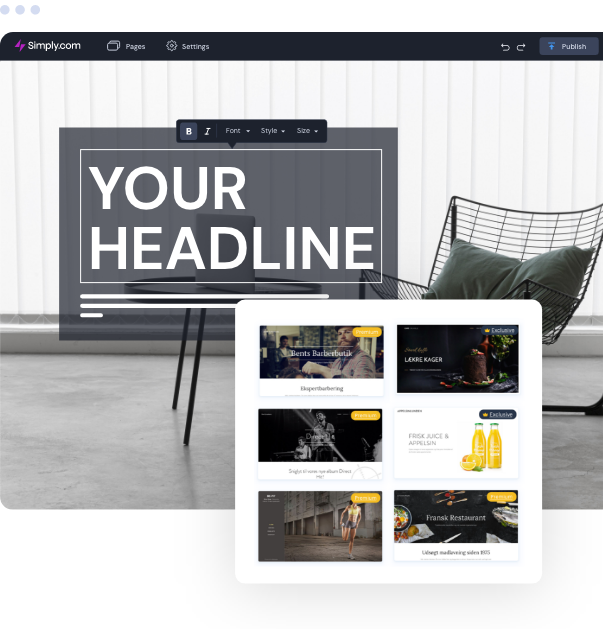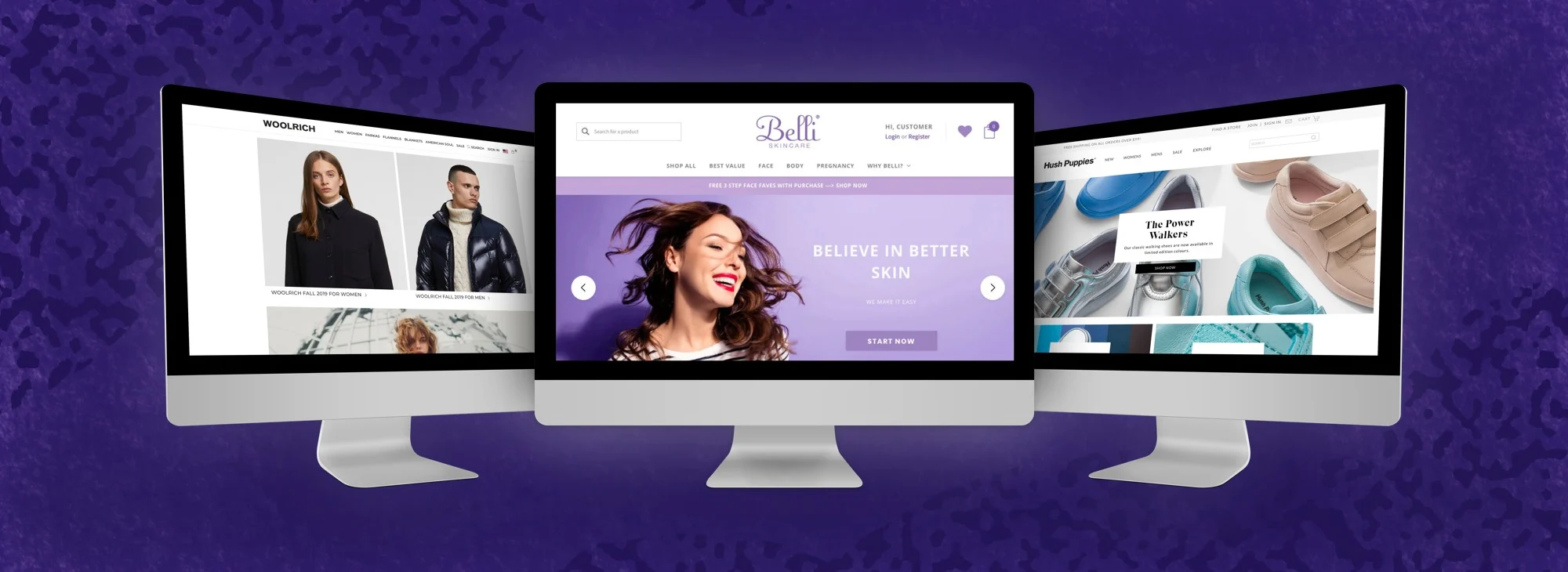Website Design Strategies to Ensure Your Site is Visually Appealing and User-Friendly
Website Design Strategies to Ensure Your Site is Visually Appealing and User-Friendly
Blog Article
Modern Web Site Design That Records Interest and Transforms
In a progressively electronic landscape, modern internet site design has actually emerged as a pivotal factor in capturing user interest and driving conversions. By purposefully using aesthetic hierarchy, responsive formats, and engaging interactive aspects, designers can produce experiences that not just attract site visitors but additionally facilitate meaningful interactions. In addition, effective call-to-action strategies play an important duty in assisting customers towards desired end results. As we discover these vital parts, it comes to be clear that understanding their interaction can dramatically influence a website's efficiency and customer fulfillment. What are the vital components that truly make a distinction?
Value of Visual Power Structure
Aesthetic pecking order is an essential aspect in website style, as it overviews individuals' focus and enhances their general experience. By strategically arranging web content, designers can route users to the most essential info first, consequently boosting involvement and boosting use. Reliable visual power structure utilizes different techniques, consisting of dimension, shade, spacing, and comparison. Bigger elements naturally attract the eye, while contrasting shades can stress key messages, making them attract attention amongst even more suppressed components.
Incorporating a sensible flow in web content setup is essential; for instance, positioning the most essential details at the top of a web page cultivates immediate recognition. In addition, consistent use typography, such as differing font sizes and styles, assists develop a clear content framework. This organization not only help in navigating but also constructs trust fund, as users feel a lot more comfy when they can easily locate what they are searching for.
Eventually, a well-executed aesthetic hierarchy not only improves visual allure however likewise considerably affects user habits. By prioritizing important components and making sure a seamless experience, developers can properly convert site visitors right into consumers, reinforcing the value of this fundamental design principle in contemporary site growth.
Responsive Design for All Devices
Developing a smooth experience across different devices is essential in today's electronic landscape, where users accessibility websites from tablet computers, desktop computers, and smartphones alike. Receptive design is a critical approach that ensures web sites adapt fluidly to various screen positionings, sizes, and resolutions. By utilizing versatile grids, photos, and CSS media inquiries, designers can develop layouts that keep aesthetic stability and performance, regardless of the gadget being made use of.
The importance of receptive style expands past visual appeals; it directly affects user involvement and conversion prices. An internet site that functions well on all tools encourages longer sees and minimizes bounce rates, as individuals are most likely to engage with content that is very easy to browse. Search engines, especially Google, prioritize mobile-friendly sites in their positions, making responsive style an important component of search engine optimization (SEARCH ENGINE OPTIMIZATION)
Including receptive layout not just boosts user experience yet additionally improves the development process. By producing a single website that works throughout devices, companies can save time and sources contrasted to creating different mobile and desktop variations. Eventually, responsive design is a basic strategy for modern web site design, More Bonuses guaranteeing availability and fulfillment for all customers, no matter their device.
Engaging Interactive Components
While a responsive design lays the groundwork for a practical web site, incorporating appealing interactive components is important for catching customer focus and fostering deeper links. Website Design. Interactive aspects, such as computer animations, quizzes, and clickable infographics, create an extra dynamic individual experience, encouraging visitors to invest more time on the site
Integrating interactive features can also guide users via complicated details, making it easier to absorb web content. For instance, interactive sliders can highlight item variations, while ingrained videos can give demonstrations or testimonials that reverberate greater than fixed photos or message. Moreover, gamification strategies, like incentives for completing jobs or involving with web content, can enhance customer inspiration and retention.
Reliable usage of interactive elements not only enriches the individual experience but can also lead to higher conversion rates. It is important to stabilize interactivity with performance; overly complex attributes may prevent site speed, negatively impacting individual satisfaction.
Streamlined Navigating Practices
Effective navigation is a foundation of any type of successful web site, as it straight influences user experience and material availability. Streamlined navigating techniques make sure that users can quickly find details, enhancing their interaction with the website. A well-structured navigation food selection need to be basic and user-friendly, commonly including a minimal number of main classifications to prevent overwhelming site visitors.
To achieve streamlined navigating, developers must prioritize a hierarchical framework that practically organizes material. Applying breadcrumb tracks can give users with context about their current area within the website, permitting smooth backtracking. Furthermore, using drop-down food selections can efficiently preserve room while still offering access to subcategories.
Receptive style is critical, as navigation needs to be useful throughout all gadgets (Website Design). Mobile customers, specifically, gain from touch-friendly food selections and retractable areas that keep use without compromising aesthetics

Efficient Call-to-Action Techniques
A well-crafted call-to-action (CTA) is crucial for directing individuals toward preferred end results on a site, as it encourages them to involve with content or make a purchase. To maximize their effectiveness, CTAs should be clear, engaging, and tactically positioned throughout the site.
First, make use of action-oriented language that connects urgency or value, such as "Start," "Join Currently," or "Insurance claim Your Discount." This language not only motivates customers yet additionally establishes clear expectations about the following steps.
Second, take into consideration layout components; CTAs should stand apart visually with contrasting shades, adequate whitespace, and prominent positioning. A switch that is very easy to see and click rises the probability of individual communication.
Furthermore, individualizing CTAs based upon user habits or demographics can dramatically improve interaction. Tailored messages reverberate more with users, driving greater conversion rates.

Conclusion
In conclusion, modern site style highlights the integration of aesthetic power structure, receptive formats, involving interactive aspects, structured navigating, and effective call-to-action methods. These components jointly improve user experience, making certain that visitors remain involved and encouraged to explore web content further. By focusing on these layout concepts, businesses can substantially improve individual retention and conversion rates, ultimately bring about greater success in the digital landscape. The constant evolution of website design underscores its essential function in efficient on the internet interaction and advertising.
In a significantly electronic landscape, modern web site style has emerged as a critical variable in recording individual attention and driving conversions.Visual hierarchy is a vital component in site design, as it overviews customers' focus and enhances their general experience.The significance of responsive design prolongs beyond aesthetic appeals; it directly impacts customer interaction and conversion prices.Integrating receptive design not only boosts individual experience but likewise enhances the development process. Inevitably, receptive design is a basic method for modern site design, making certain accessibility and complete satisfaction for all customers, no matter of their gadget.
Report this page